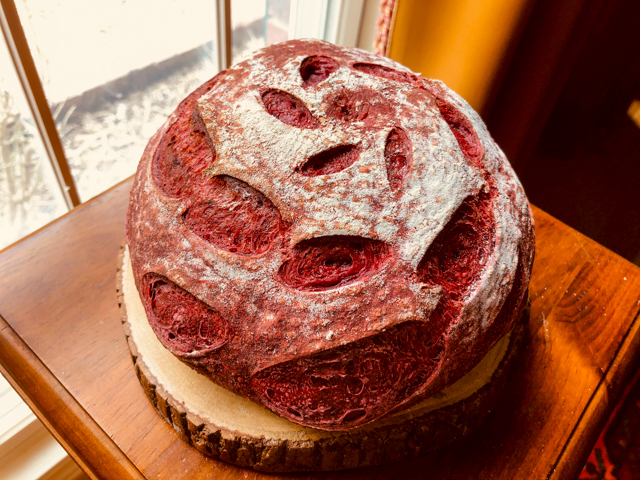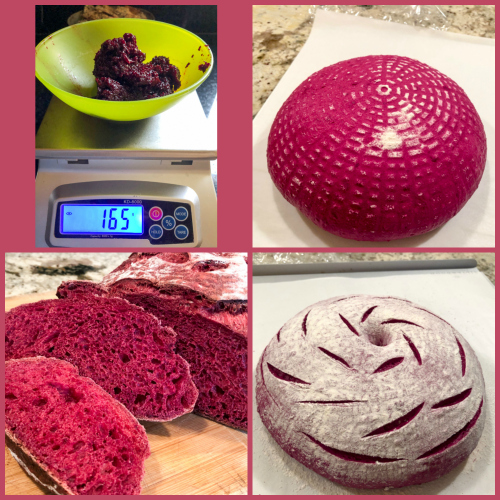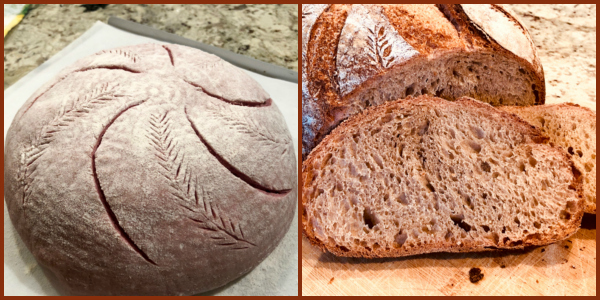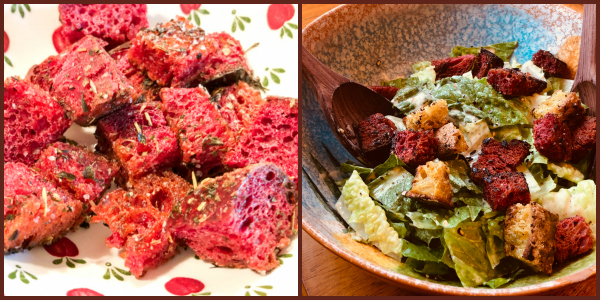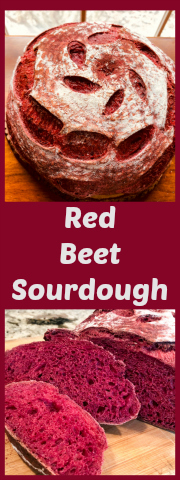I will start by blowing your mind. Below, same exact recipe for sourdough bread, with or without vitamin C added to the formula.
For the past year I’ve been playing with adding beets to bread, both using beet powder and roasted beets, but my experiments failed in the color department. Everything tasted pretty good, but the beautiful red color of beets was consistently lost during baking. I had resigned myself to brownish breads until I remembered using vitamin C to preserve the color of basil for freezing. Works like magic. Sorry, it is actually pure science. Vitamin C is a powerful anti-oxidant, and the browning reaction is simply oxidation of compounds during storage or cooking. I searched Google University and found out that others had already figured it all out and many bakers use vitamin C in their beet-containing breads.
RED BEET SOURDOUGH
(from the Bewitching Kitchen)
Comments: I was absolutely shocked by the results! You might think that the same outcome could be achieved by using some lemon or orange juice, as those fruits are loaded with vitamin C. It turns out that a whole lemon has about 20mg of vitamin C, so clearly not enough to do the job. I used purified ascorbic acid, borrowed from our lab, but I know home bakers use vitamin C tablets, usually each one contains 500 mg, so one or two tablets will be what you need. I intend to use that in the future and report back.
.
.
Same bread without vitamin C, nothing wrong with it, except that the beautiful red color is lost during baking. Even though, as you see in the composite below, until you put the bread in the oven, all seems totally fine.
.
.
And let me tell you, Red Beet Sourdough makes amazing croutons!
.
.
TWO YEARS AGO: Minnie-Macarons, a Fun Project with a Happy Ending
THREE YEARS AGO: Nigella Lawson in the Bewitching Kitchen
FOUR YEARS AGO: Walnut-Raisin Bran Muffins
FIVE YEARS AGO: Gingersnaps with White Chocolate Chips
SIX YEARS AGO: Turkey Chili with Almond Butter
SEVEN YEARS AGO: Secret Recipe Club: Leek and Cheese Tart
EIGHT YEARS AGO: Secret Recipe Club; Triple Chocolate Brownies
NINE YEARS AGO: Shaved Asparagus Salad
TEN YEARS AGO: Indonesian Ginger Chicken


